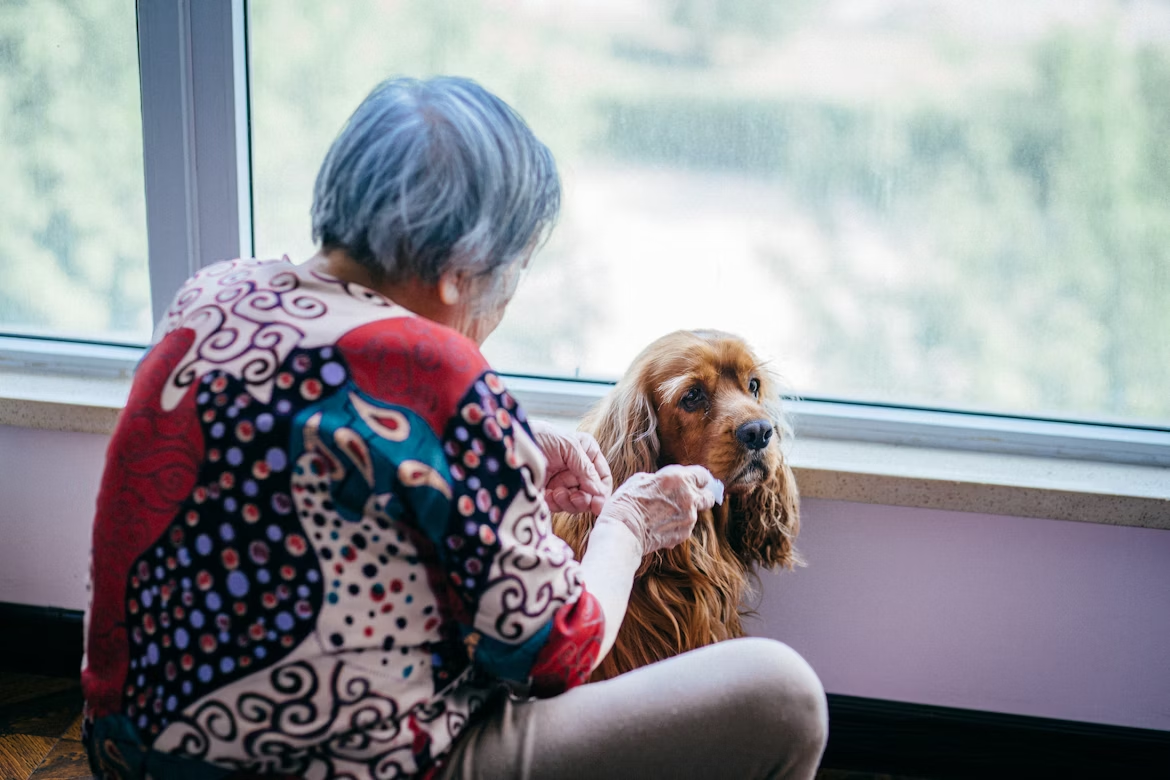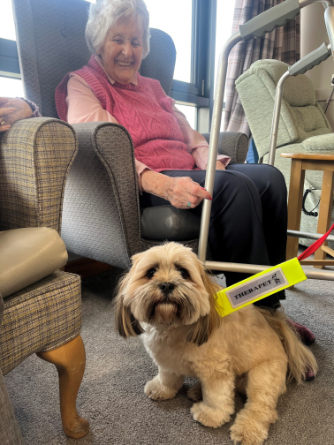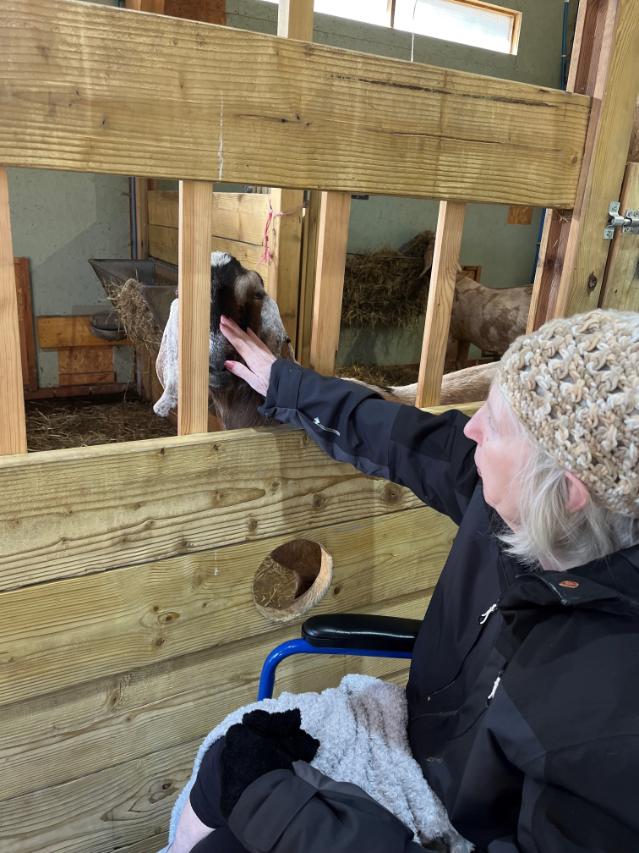The Benefits of Pet Therapy for Residents in Care Homes

Caring for the emotional and physical well-being of older adults involves much more than just meeting medical needs. In recent years, pet therapy has become a much-loved part of care home life, bringing joy, comfort, and companionship to residents. Whether it is a friendly dog visiting for cuddles or a resident’s cat sitting by their side, animals have a special way of lifting spirits and creating moments of happiness.
Pet therapy, also known as animal-assisted therapy, involves bringing trained animals into care homes to interact with residents. These sessions can take many forms, from organised visits by therapy pets to care homes that have their own resident animals. Whatever the approach, the results are heartwarming and can significantly improve quality of life.
How Pet Therapy Works
Pet therapy in care homes is designed to be both safe and therapeutic. Typically, a trained animal handler will bring a friendly, well-behaved pet to spend time with residents, either individually or in small groups. The animals are carefully chosen for their calm and gentle nature, often including dogs, cats, rabbits, or even birds.
During visits, residents might pet, talk to, or play with the animals. Some enjoy simply sitting quietly with a dog resting by their feet, while others are more active, helping to feed or brush the animal. The focus is on providing comfort, stimulation, and positive interaction that can brighten a resident’s day and help reduce feelings of loneliness.


For many residents, these sessions are the highlight of the week, offering not only the joy of spending time with an animal but also a chance to socialise with others and share fond memories of pets they have owned in the past.
Emotional Benefits of Pet Therapy
The emotional benefits of pet therapy are often immediate. Many residents experience an instant lift in mood as soon as an animal enters the room. Pets have a unique ability to connect with people without the need for words, which makes them especially valuable for residents who may find communication difficult due to dementia or other cognitive challenges.
Spending time with animals has been shown to reduce stress, anxiety, and symptoms of depression. The simple act of stroking a dog or cat releases oxytocin, a hormone linked to happiness and bonding, while also lowering levels of cortisol, the stress hormone. For residents who may feel isolated or withdrawn, a therapy pet provides companionship and a sense of unconditional love that is deeply comforting.
Animals also create a calming atmosphere. Their presence can soothe agitation and bring a sense of peace to residents who are feeling unsettled. In many care homes, pets are seen as part of the extended family, contributing to an environment of warmth and emotional wellbeing.
Physical Health Benefits
The benefits of pet therapy go beyond emotional support. Interacting with animals can have tangible physical health benefits for older adults. Gentle activity, such as walking a dog around the garden or tossing a toy for them to fetch, encourages movement and helps residents stay active. Even simple actions like brushing an animal can improve hand-eye coordination and fine motor skills.


Studies have shown that spending time with animals can lower blood pressure, reduce heart rate, and promote relaxation. The positive effects of physical contact, laughter, and companionship all contribute to a healthier, more balanced state of mind and body. For residents recovering from illness or managing chronic conditions, this type of therapy can complement other treatments and promote overall wellbeing.
Supporting Residents Living with Dementia
Pet therapy can be especially beneficial for people living with dementia. Animals can trigger memories and emotions that might otherwise be difficult to access, helping residents reconnect with parts of their past. Familiar sensations, such as the feel of fur or the sound of purring, can evoke positive experiences and bring comfort.
For some residents, interacting with animals helps to ease confusion and reduce agitation. The simple, familiar nature of caring for or spending time with a pet provides reassurance and structure. Dogs, in particular, are known to help create moments of clarity and joy in residents who may otherwise struggle to engage with their surroundings.
Pet therapy also supports communication. Residents who find it difficult to express themselves may respond more easily when interacting with an animal, smiling, talking softly, or showing affection. These small moments can have a big impact, helping to restore confidence and emotional connection.
Social and Community Benefits
One of the most overlooked advantages of pet therapy is its ability to bring people together. Group sessions create opportunities for conversation, laughter, and shared experiences. Watching a dog perform tricks, feeding a rabbit, or sharing stories about past pets often sparks lively interaction among residents.



These shared moments can strengthen friendships and make care home life feel more connected. Staff also benefit from the positive energy animals bring, as therapy sessions often boost the overall mood within the home. Family members visiting their loved ones often enjoy joining in too, which can make visits even more meaningful.
In some care homes, residents even take part in looking after small animals such as birds, guinea pigs, or fish. This sense of responsibility can bring purpose and pride, helping residents feel needed and involved in the day-to-day life of the home.
A Source of Joy and Companionship
At its heart, pet therapy is about creating moments of joy. For older adults, especially those who may no longer be able to care for their own pet, these interactions can rekindle a deep emotional bond. The sense of companionship and affection that animals provide is incredibly powerful, helping residents feel valued and loved.
Animals live in the present moment and offer unconditional acceptance, which can be a refreshing and comforting experience for residents who may be coping with loss or change. The wag of a dog’s tail or the gentle nuzzle of a cat can communicate warmth in ways that words often cannot.
Pet Therapy at Westerton Care Home
At Westerton Care Home in Bearsden, we understand the remarkable benefits of pet therapy and the comfort animals can bring to residents’ lives. Our dedicated wellbeing team regularly arranges visits from therapy pets, giving residents the chance to enjoy interaction, affection, and laughter in a safe and welcoming environment.
Alongside pet therapy, we offer a wide range of activities designed to promote emotional and physical wellbeing, from arts and crafts to gentle exercise sessions and social gatherings. Each activity is tailored to the individual, ensuring residents enjoy a lifestyle that is meaningful and fulfilling.
If you would like to learn more about how we integrate pet therapy and other wellbeing activities into daily life at Westerton Care Home, our friendly team would be delighted to show you around and answer any questions. Book a visit today and see how our caring community can help your loved one thrive.





